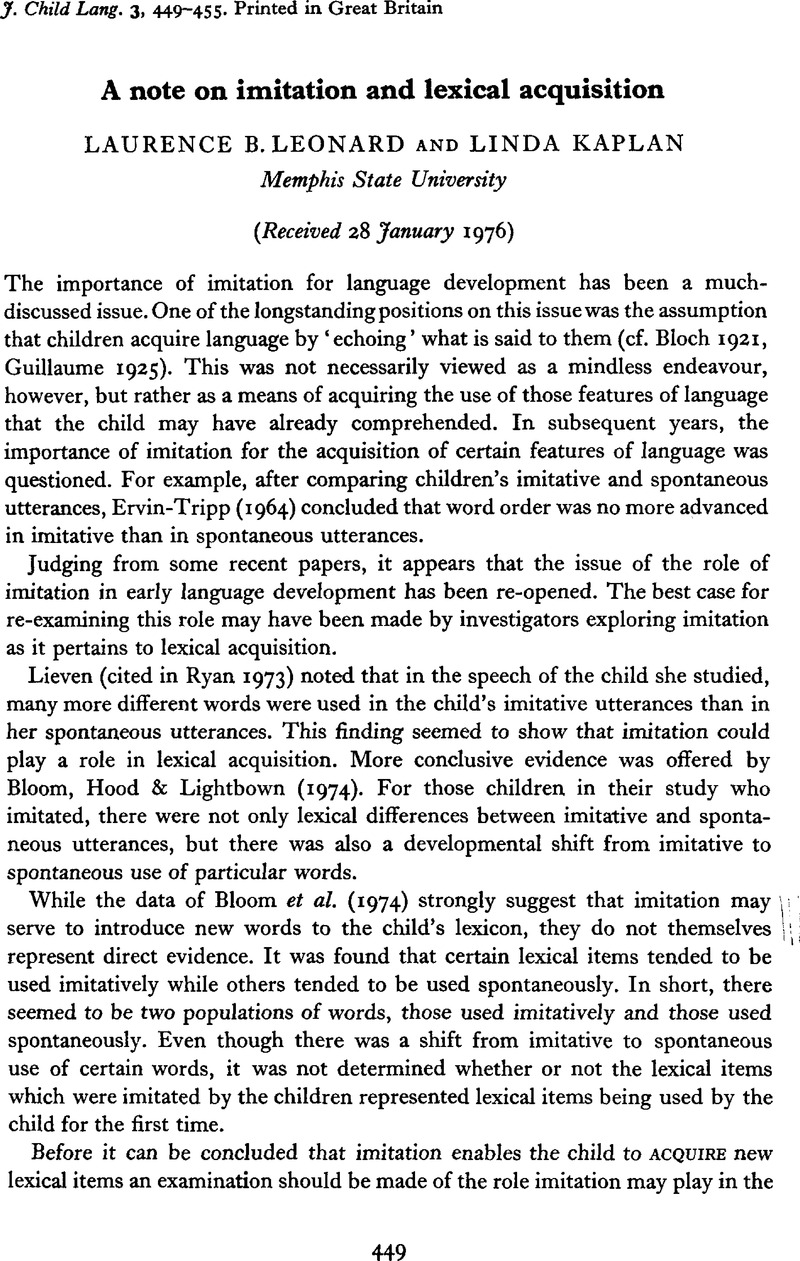Crossref Citations
This article has been cited by the following publications. This list is generated based on data provided by Crossref.
LEONARD, LAURENCE B.
and
FEY, MARC E.
1979.
Vol. 2,
Issue. ,
p.
113.
Leonard, Laurence B.
Schwartz, Richard G.
Folger, M. Karen
Newhoff, Marilyn
and
Wilcox, M. Jeanne
1979.
Children's Imitations of Lexical Items.
Child Development,
Vol. 50,
Issue. 1,
p.
19.
Howe, Christine J.
1980.
Learning Language from Mothers' Replies.
First Language,
Vol. 1,
Issue. 2,
p.
83.
Leonard, Laurence B.
Fey, Marc E.
and
Newhoff, Marilyn
1981.
Phonological considerations in children's early imitative and spontaneous speech.
Journal of Psycholinguistic Research,
Vol. 10,
Issue. 2,
p.
123.
HOWE, CHRISTINE J.
1983.
The conversational factor in language acquisition.
Early Child Development and Care,
Vol. 11,
Issue. 1,
p.
55.
Kuczaj, Stan A.
1987.
Deferred imitation and the acquisition of novel lexical items.
First Language,
Vol. 7,
Issue. 21,
p.
177.
1990.
Apprendre en imitant.
p.
337.
Pérez-Pereira, Miguel
1994.
Imitations, repetitions, routines, and the child's analysis of language: insights from the blind.
Journal of Child Language,
Vol. 21,
Issue. 2,
p.
317.
Holdgrafer, Gary
1994.
Informativeness, Imitation, and Language Play: Factors in Word Learning.
Perceptual and Motor Skills,
Vol. 78,
Issue. 1,
p.
251.
WINDSOR, MINA HWANG, JENNIFER
1999.
Imitation in the spontaneous language of children with and without Down syndrome.
Clinical Linguistics & Phonetics,
Vol. 13,
Issue. 4,
p.
323.





